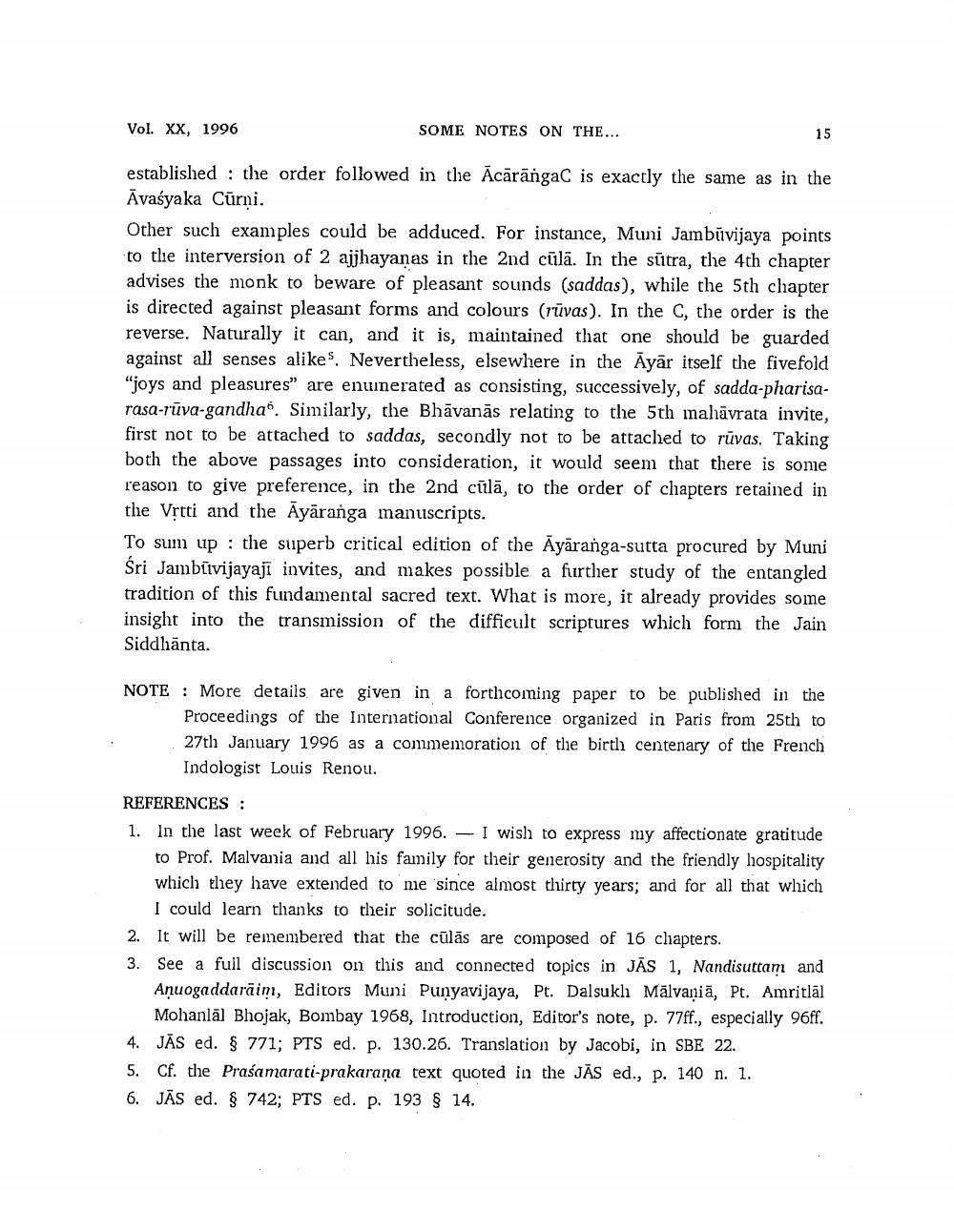________________
Vol. XX, 1996
SOME NOTES ON THE...
established : the order followed in the AcārāngaC is exactly the same as in the Āvaśyaka Cūrni. Other such examples could be adduced. For instance, Muni Jambūvijaya points to tlie interversion of 2 ajjhayanas in the 2nd cūlā. In the sūtra, the 4th chapter advises the monk to beware of pleasant sounds (saddas), while the 5th chapter is directed against pleasant forms and colours (rūvas). In the C, the order is the reverse. Naturally it can, and it is, maintained that one should be guarded against all senses alikes. Nevertheless, elsewhere in the Ayär itself the fivefold "joys and pleasures” are enuinerated as consisting, successively, of sadda-pharisarasa-rūva-gandha”. Similarly, the Bhāvanās relating to the 5th mahāvrata invite, first not to be attached to saddas, secondly not to be attached to rūvas. Taking both the above passages into consideration, it would seem that there is some reason to give preference, in the 2nd cūlā, to the order of chapters retained in the Vștti and the Ayāranga manuscripts. To sum up : the superb critical edition of the Āyāranga-sutta procured by Muni Śri Jambīivijayaji invites, and makes possible a further study of the entangled tradition of this fundamental sacred text. What is more, it already provides some insight into the transmission of the difficult scriptures which form the Jain Siddhānta.
NOTE : More details are given in a forthcoming paper to be published in the
Proceedings of the International Conference organized in Paris from 25th to 27th January 1996 as a commemoration of the birth centenary of the French Indologist Louis Renou.
REFERENCES : 1. In the last week of February 1996. – I wish to express my affectionate gratitude
to Prof. Malvania and all his family for their generosity and the friendly hospitality which they have extended to me since almost thirty years; and for all that which
I could learn thanks to their solicitude. 2. It will be remembered that the cūlās are composed of 16 cliapters. 3. See a full discussion on this and connected topics in JĀS 1, Nandisuttam and
Aņuogaddarāim, Editors Muni Punyavijaya, Pt. Dalsuklı Mālvania, Pt. Amritlal
Mohanlal Bhojak, Bombay 1968, Introduction, Editor's note, p. 77ff., especially 96ff. 4. JĀS ed. § 771; PTS ed. p. 130.26. Translation by Jacobi, in SBE 22. 5. Cf. the Praśamarati-prakaraņa text quoted in the JĀS ed., p. 140 n. 1. 6. JĀS ed. § 742; PTS ed. p. 193 § 14.




